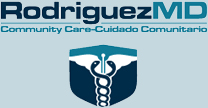Osteoporosis – The Silent Disease
 Osteoporosis is a disease affecting approximately 10 million Americans. The disease causes the loss of minerals from the bones, leaving them vulnerable to fractures. Osteoporosis is more common as we age, because new bone is not being made as quickly as old bone is breaking down. Although both men and women can develop the disease, it is more common in women.
Osteoporosis is a disease affecting approximately 10 million Americans. The disease causes the loss of minerals from the bones, leaving them vulnerable to fractures. Osteoporosis is more common as we age, because new bone is not being made as quickly as old bone is breaking down. Although both men and women can develop the disease, it is more common in women.
There are no early symptoms of osteoporosis, so it is sometimes called the silent disease. Many people do not realize they have bone loss until they experience a fracture. Later symptoms of osteoporosis include loss of height, a stooped posture, back pain, and bone breakage. The most frequent fractures occur in the hips, wrist, and spine.
Risk factors for osteoporosis include age, having a smaller frame, family history, white or Asian women past menopause, having thyroid or bowel disease, and taking certain medications. The reduced level of estrogen in post-menopausal women is a strong risk factor. Long term use of prednisone and cortisone also increases risk, as does thyroid hormone medication.
Lifestyle choices can help reduce the risk of developing osteoporosis. A diet of calcium rich foods including dairy, salmon, and dark green leafy vegetables promotes bone health. Calcium supplements may be appropriate if someone does not get enough calcium in their diet. Vitamin D improves the body’s ability to absorb calcium. Eating protein helps the body build strong bones. Maintaining appropriate body weight is important. Regular exercise can help slow bone loss. A combination of strength training, weight-bearing, and balance exercises works best.
The National Institutes of Health recommends women should have a bone density scan at age 65. The scan estimates bone mass and determines whether bones are thinning or weakening. If bone density is good, women should be rescreened in 2-3 years. The National Osteoporosis Foundation recommends that anyone who breaks a bone after age 50 have a bone density scan.
There is no cure for osteoporosis. Treatment of the disease includes lifestyle changes such as modifying diet and exercise routines. Doctors may prescribe medications that slow the breakdown of bone or help promote bone formation.




